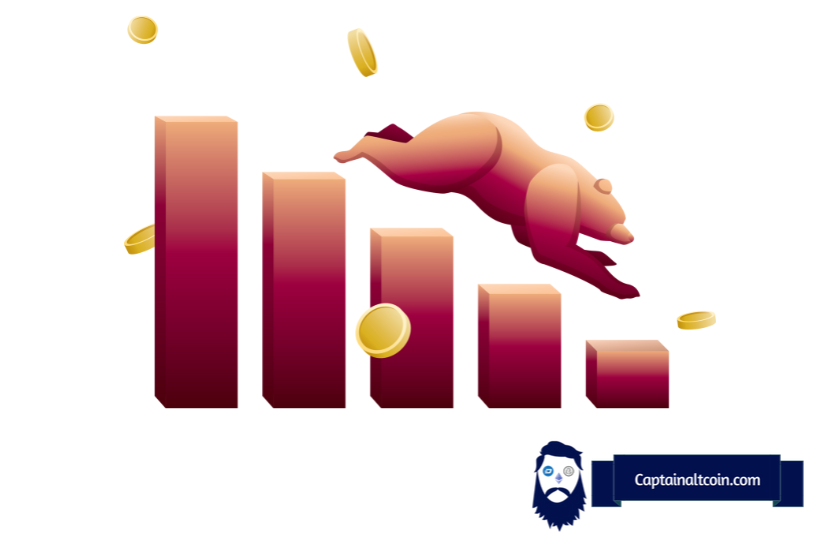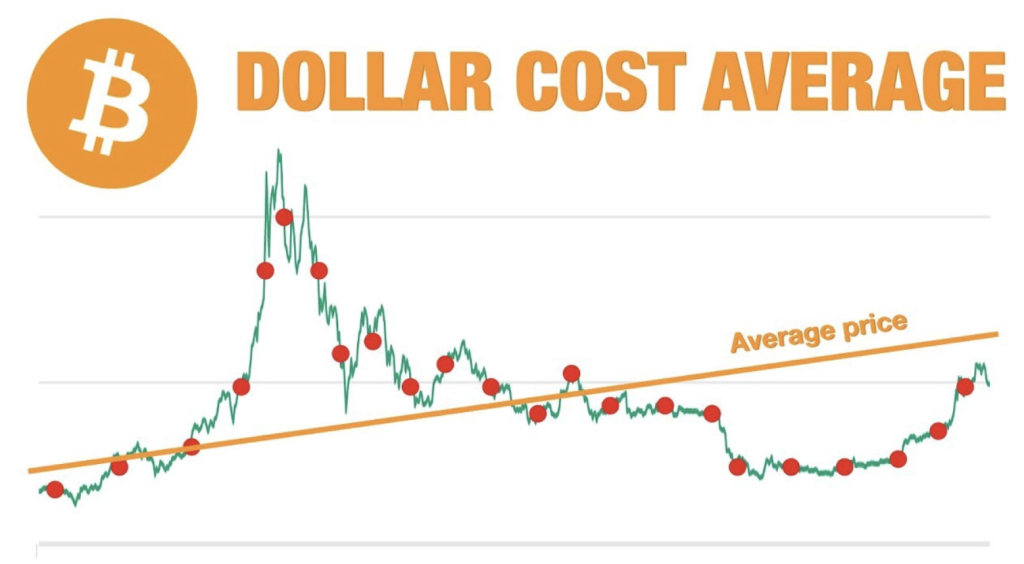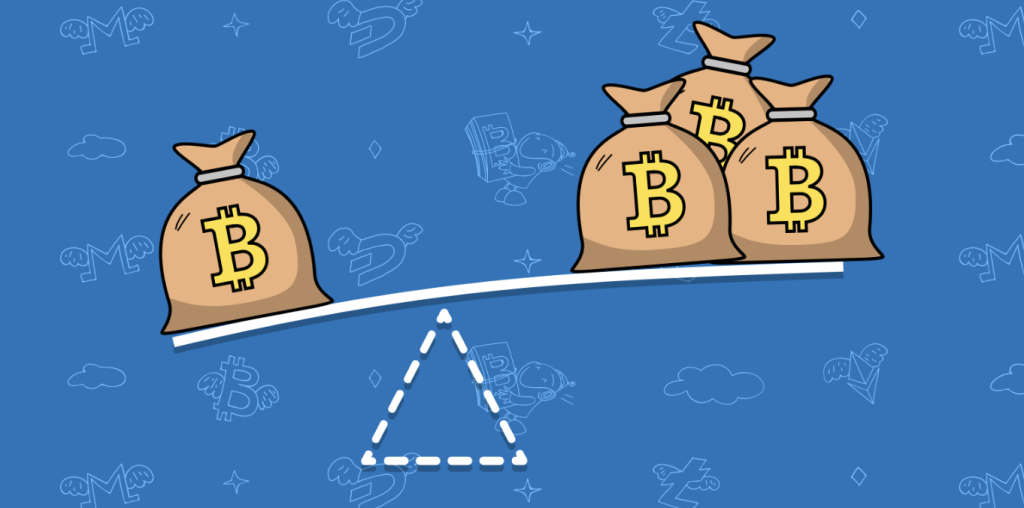
What you'll learn 👉
What is a crypto bear market?
We can safely say that the crypto market has been having a challenging year; in other words, we are in a bear market. However, even during a bear market, experienced investors find a way to make money.
The bear market period happens when the market has lost more than 20% of its value in the current year. And since both Bitcoinand Ethereum have lost even more than 20% of their value since the beginning of 2022, we are definitely inside another bear market. I say another on purpose since this is not the first bear market we are facing.
Most crypto traders do not like bear markets and find them pretty dull. However, there are some professional traders out there who can make serious money during the difficult times in the crypto market.
As already mentioned, there are a few ways and tricks the investors use to gain profits even in a bear market. This article will show the best ways to make money in a crypto bear market. Furthermore, it will explain how the bear market can be spotted sooner rather than later and how long it lasts. So, let’s start.
Please note that the suggestions and ways how to make money in a crypto bear market explained in this article should not be considered a piece of financial advice.
Top Ways To Make Money in a Crypto Bear Market
Based on our research and the extensive crypto knowledge our team has, the best ways to make money during the crypto bear market are a dollar-cost average method, staking, mining, and trading (margin, short, scalp). Moreover, you can use the time during bear markets to research and maybe find work in the crypto industry.
We will explain these methods one by one.
Buy the crypto dip using dollar-cost averaging

In bear markets, you can buy crypto at lower prices (or “crypto dip,” as traders like to call it) using the dollar-cost averaging method. This is a widely popular long-term investment strategy, and the best way to explain it is with the example:
Let’s say you invested $10 in Bitcoin every day for the past four years straight. This means your total investment for that period would be $14,610. So, you got yourself in the position that you invested all of that money in the average price of Bitcoin for the past four years, and your Bitcoin would today be worth more than $60,000.
Now, of course, your profit would be higher if you start buying with a crypto dip every day, and then eventually, when the bull run starts again, you would gain a lot of profit. The negative side of the dollar-cost average method is that you have to be extremely patient, but at the same time, you will save a lot of time you would use for investigating the market. Our most honest suggestion here – if you are by nature not a patient person, you should probably avoid dollar-cost averaging.
Staking
Staking appears to be a fantastic strategy to create a passive income from your crypto stash when the going gets rough in a crypto bear market, and your portfolio starts losing value left and right. Staking is the process of storing your funds on a proof-of-stake (PoS) blockchain for a set amount of time in exchange for a reward.
Staking has the advantage of increasing the size of your wallet even in a bear market. That way, when the bull market returns, you’ll have more money to start with than before. Moreover, because your funds are securely held on a blockchain, staking reduces the risk of panic selling.
Mining
Crypto miners go through a lot of challenges, but probably the worst is the bear market, and every miner in the world sooner or later faces their first bear market.
If miners want to survive the bear market efficiently, they must ask themselves a few critical questions – where do you stand as of today, How low can the price go if hashrate stays flat, and how high can hashrate go if the price stays flat?
After you set an upper bound on hashrate and lower bound on price, a miner can combine this data to find their operating thresholds.
However, this process is primarily situation-dependent since it depends on what the miner thinks is the future of Bitcoin’s price and hashrate.
Margin trading & shorting

Margin trading and shorting is the following method you can use to make money during the crypto bear market. But first of all, let’s understand the concept of margin trading – margin trading means that you loan the money from a lender (an investor who loans money) and use it as collateral to invest it with your own collateral. When you make a profit, you simply return the money you loaned along with interest to the lender, and that’s it.
Short in trading means you sell an asset with the plan to repurchase it when it decreases in value and therefore make a profit.
The best way to understand how short-margin trading can work and make a profit during a bear market is through the example:
- You have $100 to invest, and the price of the coin you are targeting is $10. You can make a profit when the price of the coin goes down to $5.
- Borrow 20 coins ($200 worth) and use your $100 as collateral. That’s x2 leverage. Keep in mind that you will probably have to pay 5% interest on those 20 coins when you return them later
- Now you can sell 30 coins ($200 borrowed amount + $100 your amount) when the price is $10, and now you have $300 “purchasing power.”
- When the price goes down to $5, you repurchase the coin, and now you have 60 coins ($300 worth).
- You can now return 20 coins + 1 interest to the lender, who will leave you sitting at 39 coins
- You can sell those 39 coins for the price of $195. And there it is, you made a $95 profit with a $100 investment. This is how you make money during the bear market with margin trading and shorting
Forks and airdrops

You can profit from forks and airdrops during the bear market, but you have to be interested in numerous altcoins and alternative cryptocurrencies. A fork occurs when users vote to split one blockchain network from another, as you may know. They have a shared history up until the forking block, but after that, they are separate networks with potentially distinct rules, consensus, and other features.
Litecoin, a fork of Bitcoin, is a simple example. Some Bitcoin users wanted the network to fork so they could program their own methods to validate transactions faster and cheaper. However, when a hard fork involves an airdrop, things become interesting.
Holders of the old token are given the new token as an incentive to participate in the forked blockchain through an airdrop. You can make a lot of money just by holding the forked token, depending on its value. In the blockchain world, forks are relatively standard, and paying attention to them can ensure you profit from each one. It’s a different kind of passive income, to be sure, but it may really help you if you pay attention to it.
Scalp trading
Traders who perform scalp trading are called “scalpers.” In short, scalp trading means that you earn profits from small fluctuations in price. When you successfully complete a lot of these small gains, you will get a substantial profit. The purpose is to keep the frequency which means scalpers trade in a number of successful trade deals.
Scalp trading is a short-term technique which means that you will have a lot of trades per day where you will be chasing profits in different price movements during the day. The goal of a scalping strategy is to buy a crypto asset at a cheaper price and sell it when the price rises, which is definitely doable during a bear market. It’s critical to find highly liquid crypto assets that fluctuate in price frequently throughout the day. In other words, keep in mind that you will not be able to scalp if the asset is not liquid.
Not being greedy is probably the key to success in scalp trading since you have to sell the asset when you gain a small profit and do not chase more enormous gains since your opportunity can vanish in that case.
Use this time to research
Even though we mentioned multiple times that you could definitely make money during bear markets, for a significant part of traders, this period can be pretty dull. In other words, traders and investors spend more miniature time trading and investing than they usually do when the market has the upper trend or when the bull run is lasting. So, what can you actually do to improve yourself as a crypto trader during the bear market? Well, one of the answers can be – to use this time to research or educate yourself about the crypto and blockchain industries.
You can research various things in crypto, but probably what will make you the most profit and be the most beneficial in the future is researching coins (projects). Just by investigating the coin, you can figure out if it’s worth investing in it or in the future. Avoid “so-called” shitcoins, especially during the bear market, since most of them (if not all) will literally never recover, not only in the next bull run.
Work in crypto
If you are indeed passionate about crypto, you can even try finding a job in the crypto industry. For example, you can investigate various websites (like captainaltcoin, for instance) and see if they offer some carrier jobs, like content writers or editors.
Even more so, you can look through exchanges or wallets and see if they offer some job opportunities. More often than not, exchanges post about open positions in the engineering, marketing, finance, management sectors, etc. If you think you possess any of the relevant skills they are looking for, do not hesitate to apply and work in the crypto industry during the bear markets so that you can start earning your salary by working in the crypto world.
In my honest opinion, if you are involved in crypto for at least a few years, and when I say involved, I mean you know how the market actually works, you can definitely find a crypto-based job as well. It actually depends on you and whether you are interested in something like that.
How to Spot Bear and Bull Markets?
A bull market is a situation in which prices are rising, and economic conditions are generally favorable. A bear market develops when the economy is weakening, and the majority of stocks are losing value.
A classic bear market is characterized by a sharp drop in stock values, poor investor confidence, and a feeling that the market is hazardous is typical. Investor confidence and the sense of a robust economic environment are likely to be high in a bull market, which is defined as a continuous rise in stock prices.
In general, follow the previous trends during the bear and bull markets and follow the economic situation globally, and you should be able to spot what kind of market is coming. Besides that, you can also develop your own strategy or use some of the tools that can help you notice the upcoming bear market.
How do crypto bear markets work?

Even though we have already explained what the bear market is, I would like to go even deeper in the analysis and explain how the bear market actually works, not only in the crypto industry but in the traditional markets as well.
A bear market, according to some people, is defined as a 20% price loss over a 60-day period in traditional markets. This downtrend is usually the outcome of investor pessimism that comes from a loss of faith in market prices and indexes’ overall performance. Investors begin selling their holdings in response to heavy market sentiment, which results in dropping prices and sometimes leads to capitulation moments.
While a 20% decrease in market prices is traditionally considered the start of a bear market, keep in mind that the majority of signals of a future bear market are not always so visible.
What causes a bear market, and how long do they last?
The decline in the overall market and economic crisis can definitely cause a bear market. Furthermore, a decline in indexes like the S&P 500 can also cause bearish trends. However, as already mentioned above, experienced traders say that we can accept we are in the bear market if the leading coins have a 20% price drop in a two months period or more.
There is not a specific rule about how long bear markets last, but based on the history, at least in the crypto industry, the bear market lasts for at least a year, but it can be even more than that (two or more years). In other words, be patient since we estimate this bear market will last at least until the end of 2022.
“History is no guide to future performance, but if it were, today’s bear market would end on Oct 19, 2022 (35-year anniversary of Black Monday) with S & P 500 at 3000.”







